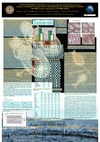Please use this identifier to cite or link to this item:
https://accedacris.ulpgc.es/jspui/handle/10553/12416
| DC Field | Value | Language |
|---|---|---|
| dc.contributor.author | Socorro Cruz, Juan Antonio | en_US |
| dc.contributor.author | Roo, Javier | en_US |
| dc.contributor.author | Izquierdo, Marisol | en_US |
| dc.contributor.author | García Romero, Josefa | en_US |
| dc.contributor.author | Carro, M. | en_US |
| dc.contributor.author | Valencia, Antonio | en_US |
| dc.contributor.author | Fernandez-Palacios, H. | en_US |
| dc.date.accessioned | 2014-11-12T13:04:35Z | - |
| dc.date.accessioned | 2018-06-15T09:19:34Z | - |
| dc.date.available | 2014-11-12T13:04:35Z | - |
| dc.date.available | 2018-06-15T09:19:34Z | - |
| dc.date.issued | 2004 | en_US |
| dc.identifier.uri | https://accedacris.ulpgc.es/handle/10553/12416 | - |
| dc.description.abstract | Since paralarval rearing is still the main bottleneck for the development of octopus culture, the aim of the present study was to obtain some information on the feeding strategy and nutritional requirements during paralarval stage. For that purpose just hatched out octopus paralarvae were fed with live preys in three different combinations, trying to match their natural food: Enriched Artemia metanauplii, Grapsus grapsus zoeas supplemented with enriched Artemia, and Plagusia depressa zoeas supplemented with enriched Artemia. Paralarval treatments were carried out during 28 days in triplicates; fibre glass 120 l tanks in flow through system were used. Growth, in terms of dry body weight, mantle length and width, was determined each seven days. A histological study of the paralarval development was carried out. Biochemical composition of preys and paralarvae were determined. Growth was significantly better in paralarvae fed with zoeas and Artemia than in those fed only with Artemia, from day 8 after hatching. Besides a clear effect on the digestive gland histology morphology was observed. | en_US |
| dc.language | eng | en_US |
| dc.source | XI International Symposium on Nutrition and Feedin in Fish. 2004. Phuket, Thailand. | en_US |
| dc.subject | 251092 Acuicultura marina | en_US |
| dc.subject | 240110 Histología animal | en_US |
| dc.subject.other | Crab zoea | en_US |
| dc.subject.other | Octopus | en_US |
| dc.subject.other | Paralarvae | en_US |
| dc.title | Effect of different live prey, Grapsus grapsus Linnaeus 1758 and Plagusia depressa Fabricius, 1775 zoeas,over histology and biochemical composition of common octopus, octopus vulgaris Cuvier, 1797 paralarvae | en_US |
| dc.type | info:eu-repo/semantics/conferenceobject | en_US |
| dc.type | Conference poster | en_US |
| dc.investigacion | Ciencias | en_US |
| dc.rights.accessrights | info:eu-repo/semantics/openAccess | es |
| dc.type2 | Póster de congresos | en_US |
| dc.utils.revision | Sí | en_US |
| dc.identifier.ulpgc | Sí | en_US |
| item.grantfulltext | open | - |
| item.fulltext | Con texto completo | - |
| crisitem.author.dept | GIR Grupo de Investigación en Acuicultura | - |
| crisitem.author.dept | IU de Investigación en Acuicultura Sostenible y Ec | - |
| crisitem.author.dept | Departamento de Biología | - |
| crisitem.author.dept | GIR Grupo de Investigación en Acuicultura | - |
| crisitem.author.dept | IU de Investigación en Acuicultura Sostenible y Ec | - |
| crisitem.author.dept | Departamento de Biología | - |
| crisitem.author.orcid | 0000-0002-9660-230X | - |
| crisitem.author.orcid | 0000-0003-4297-210X | - |
| crisitem.author.orcid | 0000-0003-1410-8154 | - |
| crisitem.author.parentorg | IU de Investigación en Acuicultura Sostenible y Ec | - |
| crisitem.author.parentorg | IU de Investigación en Acuicultura Sostenible y Ec | - |
| crisitem.author.fullName | Roo Filgueira, Francisco Javier | - |
| crisitem.author.fullName | Izquierdo López, María Soledad | - |
| crisitem.author.fullName | Fernández Palacios, Hipólito | - |
| Appears in Collections: | Póster de congreso | |
Page view(s)
63
checked on Jul 8, 2023
Download(s)
25
checked on Jul 8, 2023
Google ScholarTM
Check
Share
Export metadata
This item is licensed under a Creative Commons License

